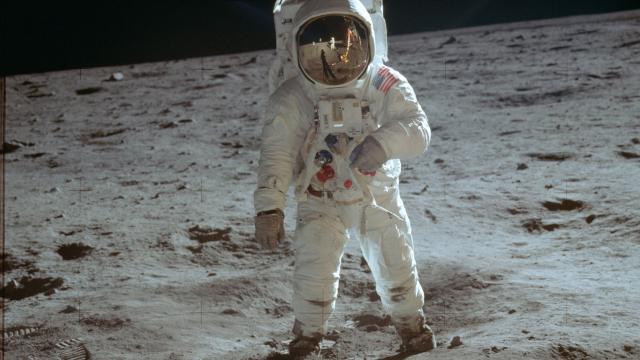July 20, 2019 was the 50th anniversary of the date when Apollo 11 crewmembers Neil Armstrong and Buzz Aldrin became the first humans to walk on the lunar surface, and the chief of the European Space Agency (ESA) wants to give their landing site, Tranquility Base, special heritage status.
Per the Guardian, ESA director general Jan Wörner wants the site, as well as the landing site of Lunokhod 1, the first rover to touch down on the moon in November 1970, to be protected from other human exploration, telling the paper the locations are important to all of mankind.
“The Apollo 11 landing site is world heritage for humanity,” Wörner told the Guardian. “This was humans, as they had in the past, going beyond what they had done before. When humans came out of their caves, they were going beyond. And this was another dimension of going beyond, to another body in our universe.”
“Apollo 11 and Lunokhod would be the two sites I would save,” he added. “These were both a climax, a culmination of all that was done until then.”
As the Guardian noted, giving the two landing sites heritage status poses unique issues because unlike sites protected by the United Nations Educational, Scientific and Cultural Organisation (UNESCO), the UN’s Outer Space Treaty allows universal access to space but warns this right is “not subject to national appropriation by claim of sovereignty.”
Per the New York Times, there is technically no U.S. or international law that would currently prevent someone from, say, driving a space SUV right over Armstrong and Aldrin’s footprints, outside of guidelines from NASA that are only binding to its commercial partners.
That complicates efforts to keep roving space explorers away from either site, though Wörner told the Guardian he hoped nations could simply reach an agreement putting them off-limits.
“My hope is that humanity is smart enough not to go back to this type of earthly protection,” Wörner told the Guardian. “Just protect it. That’s enough. Just protect it and have everybody agree.”
Another expert, University of Mississippi lawyer and For All Moonkind co-founder Michelle Hanlon, told the paper that any such agreement should also include at the very least “the site of Luna 2, the very first object humans crashed on to another celestial body, and Luna 9, the very first object humans soft-landed on another celestial body.”
Hanlon told Slate that there are over 100 sites on the moon with evidence of human activity; though Hanlon does not believe all of them warrant protection, she told the Guardian that “We have to be prepared for the company or nation that doesn’t care” or actively pillages such sites for profit. Other risks include theoretical future mining or industrial operations on the lunar surface that could destroy the sites or even space tourists.
The U.S. is planning its own return to the moon within five years (a target that may be hard to meet), while China is exploring the possibility of constructing a base there by the year 2030 and SpaceX is planning moon missions (that are not as of yet expected to involve landings). As the Guardian noted, at least five private companies are aiming to put landers on the lunar surface by 2024.
“If you’re a couple of college students and you have a rover and iPhone, of course you’re going to want to drive around and go to the Apollo landing sites,” Georgetown University space law expert Steve Mirmina told the Times. “You’d want to take a photo of the first footprints, maybe see if the flag is still standing, or take a photo of all the bags of poop that NASA left behind on the moon.”
Per Slate, last week Texas Representative Eddie Bernice Johnson introduced the “One Small Step to Protect Human Heritage in Space Act” (a counterpart has already been passed in the Senate) which would require all U.S. government-licensed space operations to give Apollo landing sites a wide berth. However, negotiating an international treaty would be far more complicated, according to Hanlon.
“If you have sites on the moon that nobody can touch, that’s opening the door to figuring out how we’re going to regulate private activities in space, and space resource utilization,” Hanlon told Slate, adding that there is significant disagreement among historians what qualifies as “heritage in outer space.” For example, Hanlon mentioned that a colleague did not think sites aged 50 years warranted such a distinctive status.
The moon may be a large place, but it’s only a matter of time before future generations of explorers could decide to return to its best-known sites, historical archaeologist and Penn State professor Pete Capelotti told Australia’s ABC.
“You’ll never get a second chance to preserve these sites,” Capelotti told ABC. However, Flinders University space archaeologist Alice Gorman told the network another complication could be future expeditions returning for scientific data such as how equipment left behind has fared.
“What has happened to this material in 50 years of sitting on the lunar surface?” Gorman said. “This is going to be really interesting scientific information because it will help planning for future missions and get an understanding of long-term conditions.”
